
Think of an MLB star's Baseball Savant page as the back of a Statcast baseball card.
At the very top of that Baseball Savant page is a snapshot of how the player is performing in all of the key Statcast stats, powered by Google Cloud, and how he stacks up to the rest of the Major Leagues. And now that page is newly redesigned to give you a more complete picture for every big leaguer.
When you search for a player on Baseball Savant, what you see front-and-center is his MLB percentile rankings in various Statcast metrics. We've added a bunch of new categories for both hitters and pitchers, including sections for a player's overall value, and the slider bars displaying the rankings for each Statcast metric also have a new look that makes it easier to see a player's stats and understand the type of player he is.
See for yourself. Here are 11 players with the most interesting Statcast pages right now.
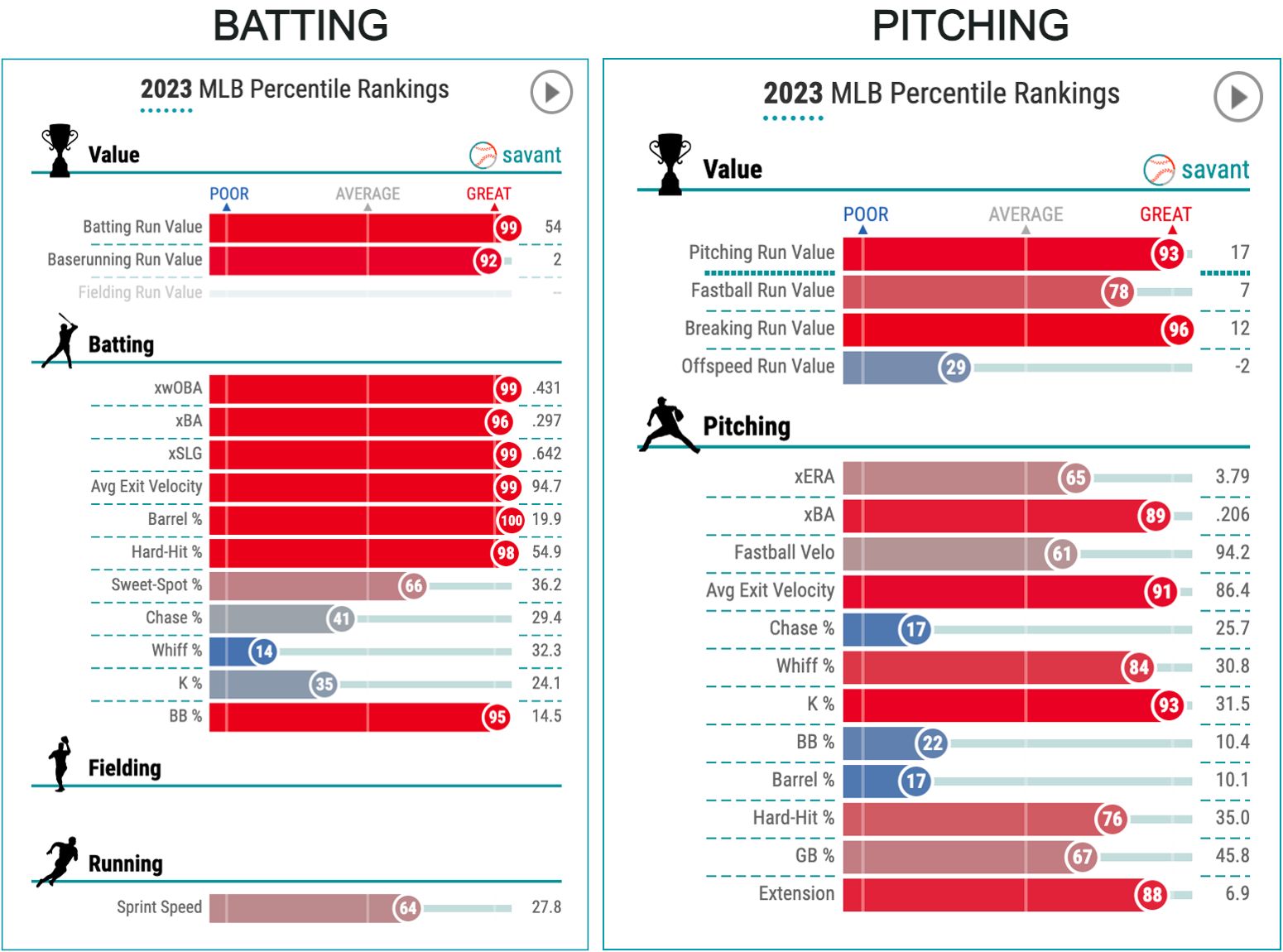
There's only one player with a Statcast batting player card and a Statcast pitching player card. Of course, Ohtani is elite on both. At the top of his Baseball Savant page, you can now see all his Statcast value metrics. As a hitter, he's in the 99th percentile of MLB in batting value (his runs created for the Angels). As a pitcher, even though his season is over, he's still in the 93rd percentile of MLB in pitching value (his runs prevented on the mound).
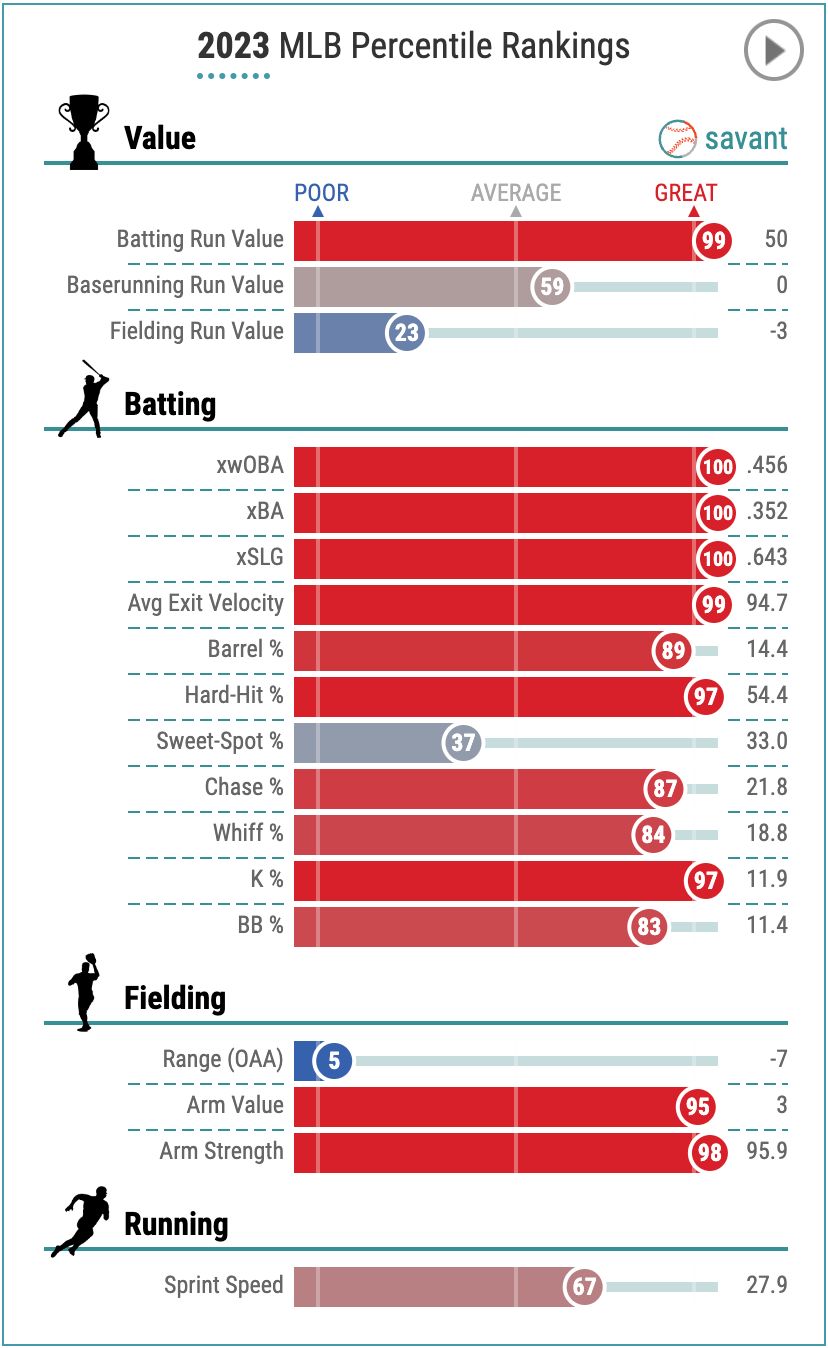
He's a real-life superstar and a Statcast superstar. Look at all that red on Acuña's batting section. Top of the league in all of Statcast's quality-of-contact stats: expected batting average, expected slugging percentage and expected wOBA. Acuña is the 100th percentile hitter for all three categories. You can also see, for example, how he has one of MLB's elite throwing arms in the outfield under the new arm value category.
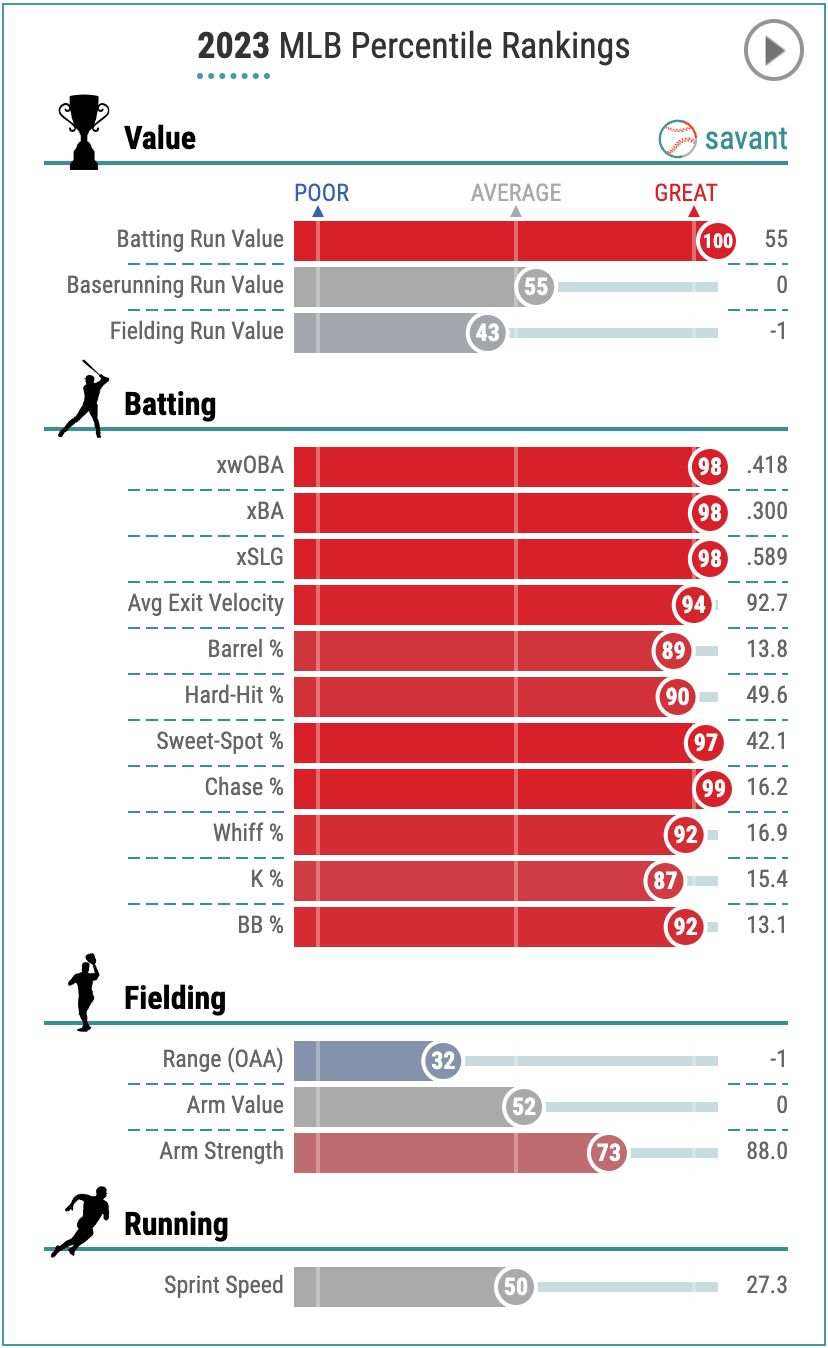
If one person could come for Acuña in the NL MVP race -- or the NL Statcast MVP race, if there was one -- it's Betts. The Dodgers star has a Baseball Savant player card that's equally top-of-the-charts. Betts has elite quality of contact. He has elite exit velocity and launch angle numbers. He has elite plate discipline numbers. What a complete hitter.
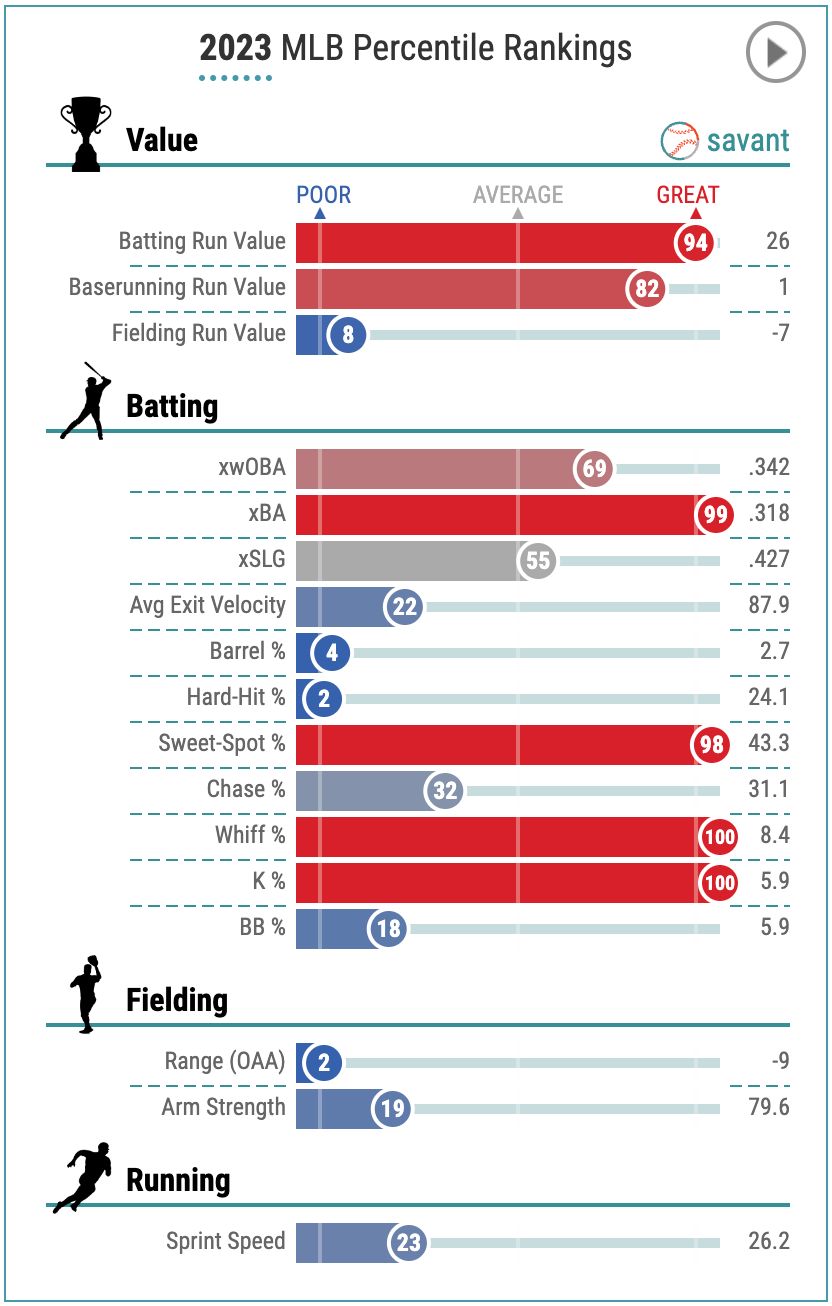
Arraez has one of the most visually unique Statcast player cards. It illustrates exactly how he's an elite hitter who can lead the MLB batting race despite rarely hitting the ball hard. Arraez's exit velocity, hard-hit and barrel sliders are all a deep blue. But his swing-and-miss, strikeout, launch angle sweet-spot and expected batting average numbers are all an equally deep red. Arraez doesn't need to barrel the ball to make excellent contact, because he always puts the ball in play and he's one of the most consistent line-drive hitters in baseball.
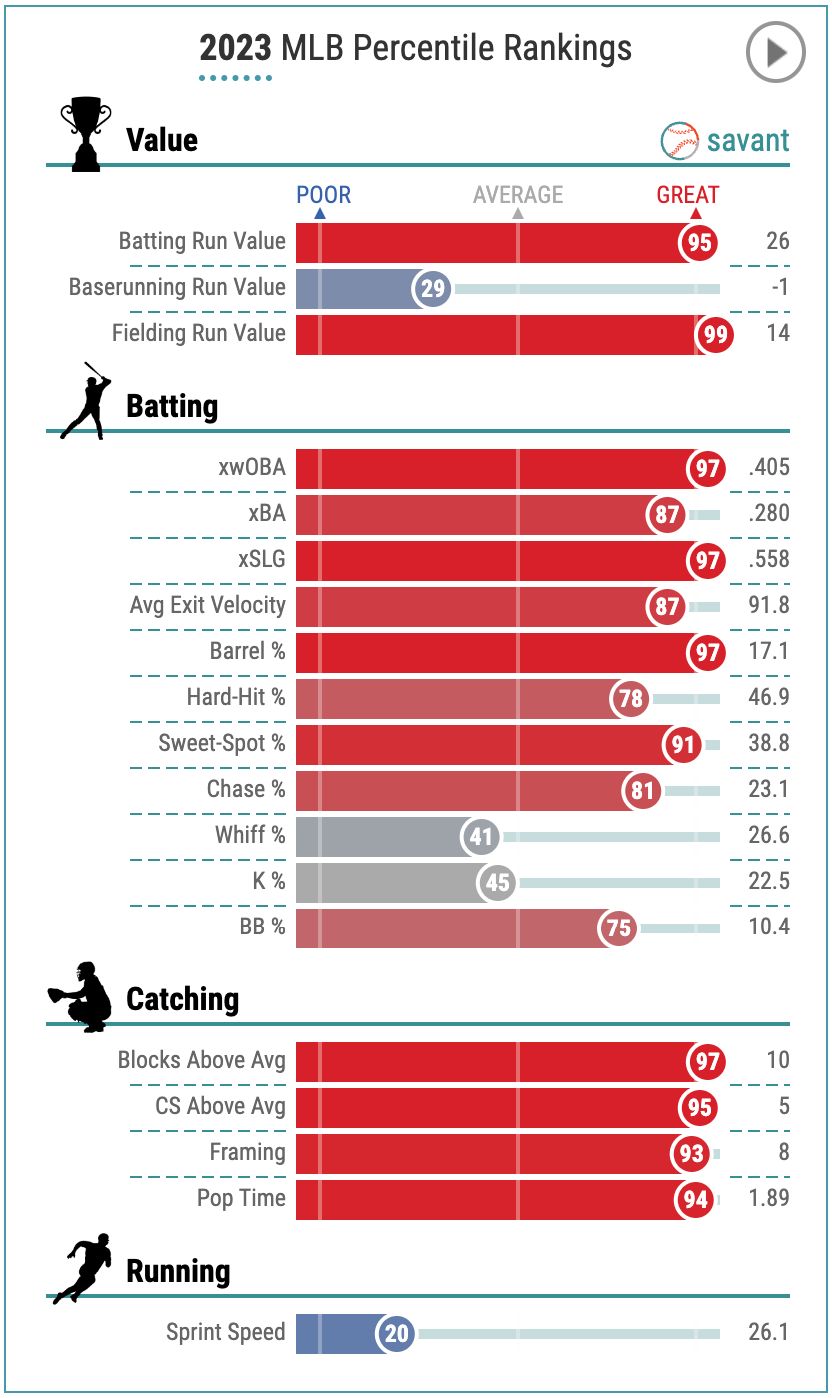
One of the rarest finds in baseball today is a catcher who's both a complete offensive and defensive player. Murphy is that catcher in 2023. He ranks among the top 5% of all MLB players in both batting and fielding value, and he's among the MLB leaders in every Statcast catching category: Blocks Above Average, Caught Stealing Above Average, Framing and Pop Time. His control of the running game is even more important this year, given that the rule changes put in place for 2023 have spurred stolen bases across MLB.
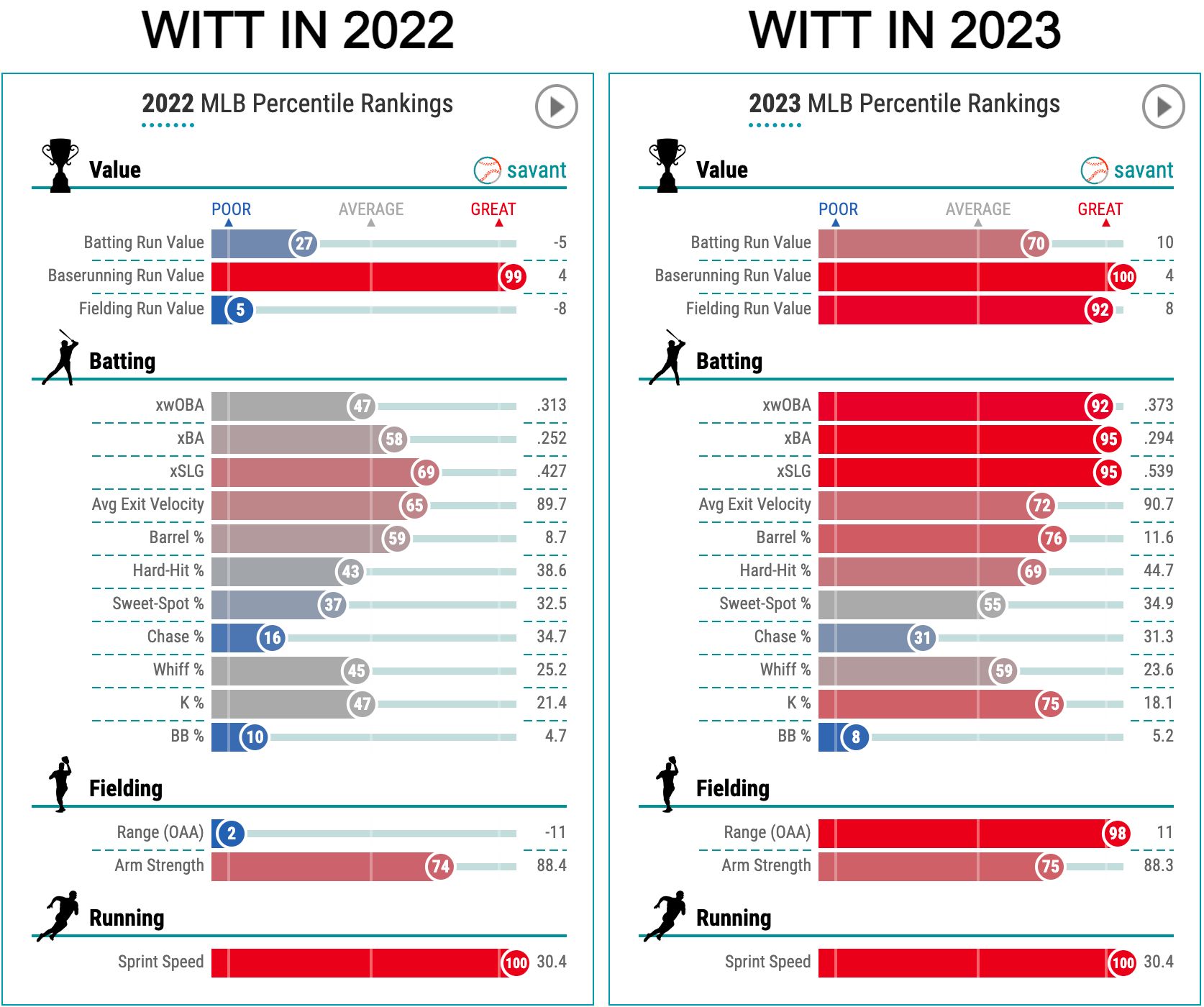
Looking at Witt's Statcast page for 2022 vs. 2023 is one of the best ways to understand his breakout this season. He's the same electric baserunner that he was as a rookie, but check out the turnaround in the 23-year-old's batting and fielding metrics. Witt's quality of contact has taken a huge leap, which you can see in his expected batting stats. And he's gone from the bottom 5% of MLB to the top 10% in overall fielding value, and from the bottom 2% to the top 2% in Outs Above Average.

Let's see some pitchers, starting with Strider, who's chasing a 300-strikeout season and is probably the most purely overpowering starter in baseball right now. It shows in his Baseball Savant page. From Strider's pitching value, to his expected ERA, to his fastball velocity, to his strikeout, swing-and-miss and chase numbers, to the release extension that allows his stuff to play up even though he stands at an even 6-foot, the Braves ace has it all going.
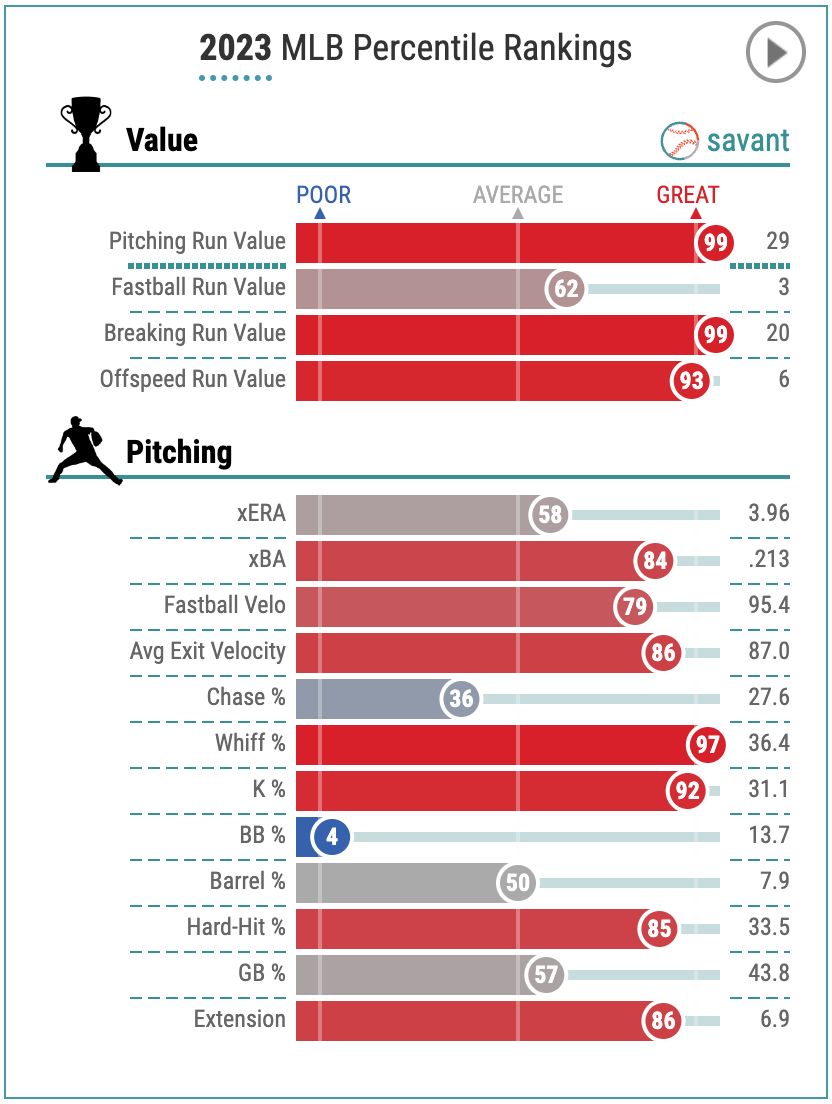
Now you can see exactly how Snell is getting it done as MLB's ERA leader. Among the new categories for pitchers on their Baseball Savant player pages are fastball value, breaking ball value and offspeed pitch value, so you can see how pitchers use each of the three main pitch groups. Snell's fastball is good, but it's his wipeout secondary stuff that makes him great -- despite a 4th-percentile walk rate. His slider-curveball breaking ball pair and his changeup are what give him the 97th-percentile whiff rate and 92nd-percentile strikeout rate you also see on his Savant sliders.
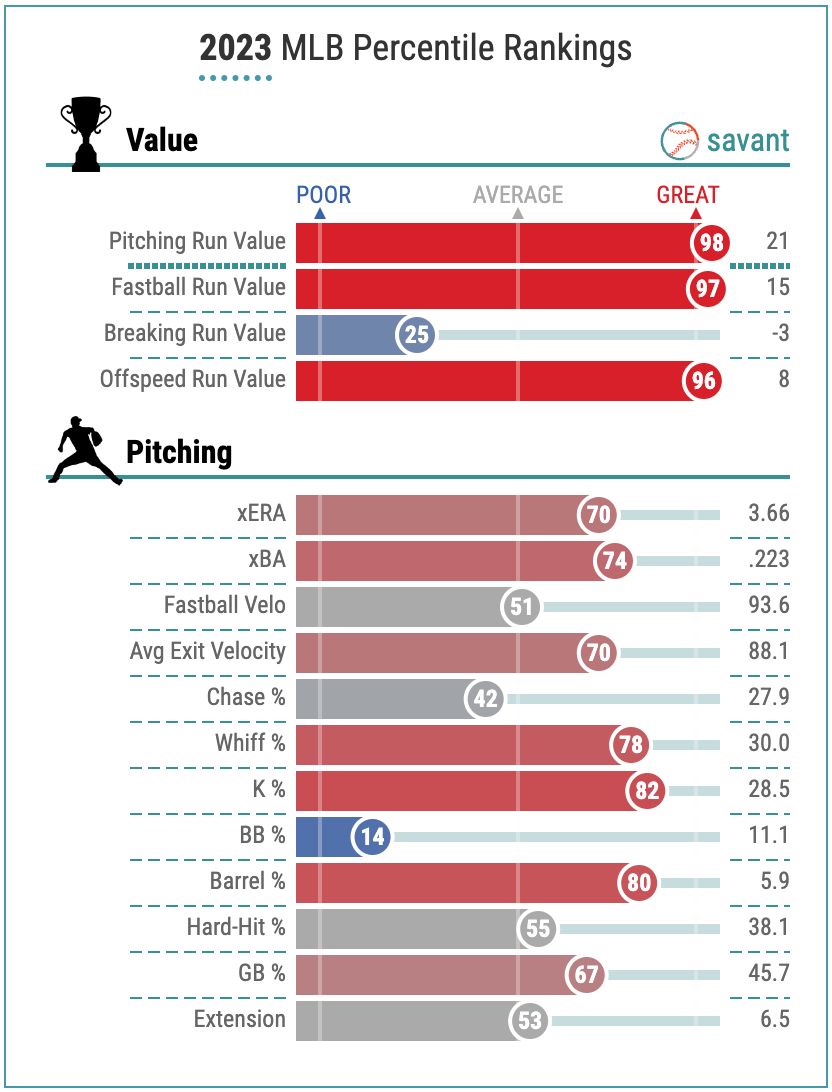
The first look at Senga's Statcast data with the Mets shows you why he's the ace left in New York. The "ghost fork" makes Senga one of MLB's best offspeed users -- he ranks in the 96th percentile of MLB in offspeed value as the league's only forkball user -- and is the driving force behind his All-Star debut season, as he ranks in the top 2% of all MLB pitchers in Statcast's overall pitching run value metric.
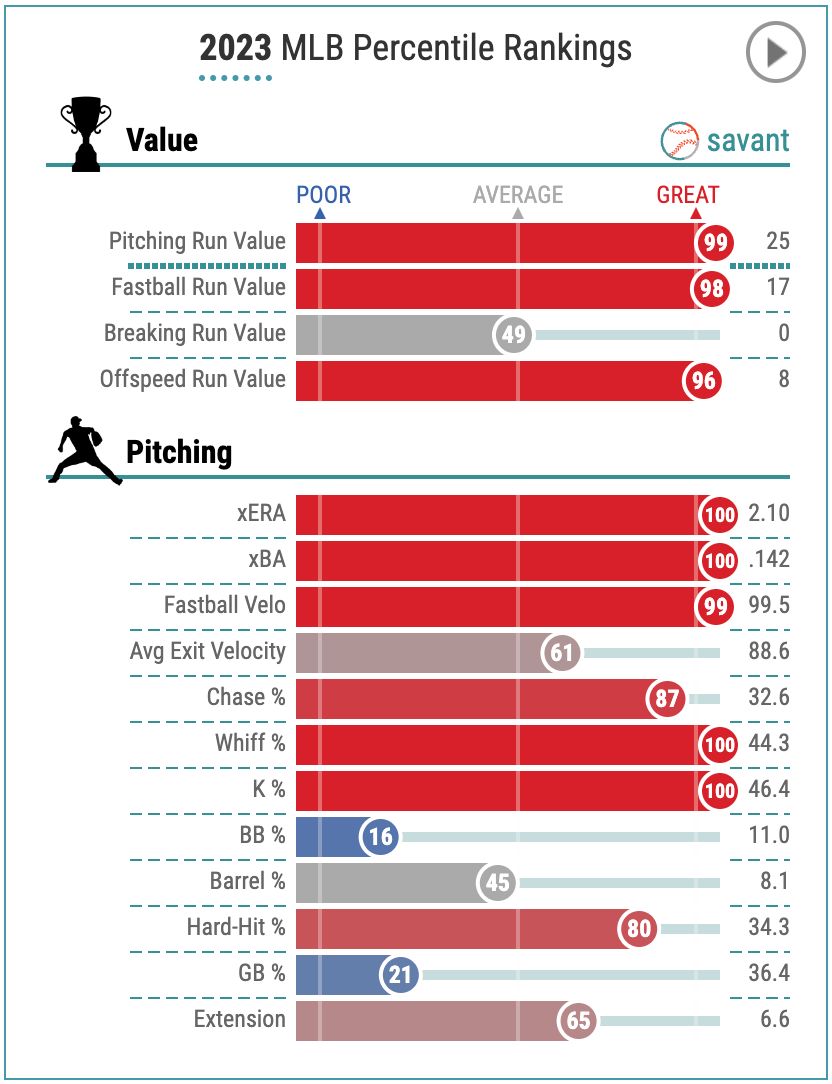
Bautista is now on the IL, but when he was healthy, opponents couldn't touch him. The Orioles closer is at the top of the scale -- aka 100th percentile of MLB -- in expected ERA, whiff rate and strikeout rate. His fastball-splitter combo is one of the most dominant in baseball. In the limited innings of a reliever, he's created as much total run value as the most elite starters -- his +25 pitching run value (+17 runs prevented from his fastball and +8 from his splitter) ranks fourth in the Majors behind only Sonny Gray, Gerrit Cole and Snell.
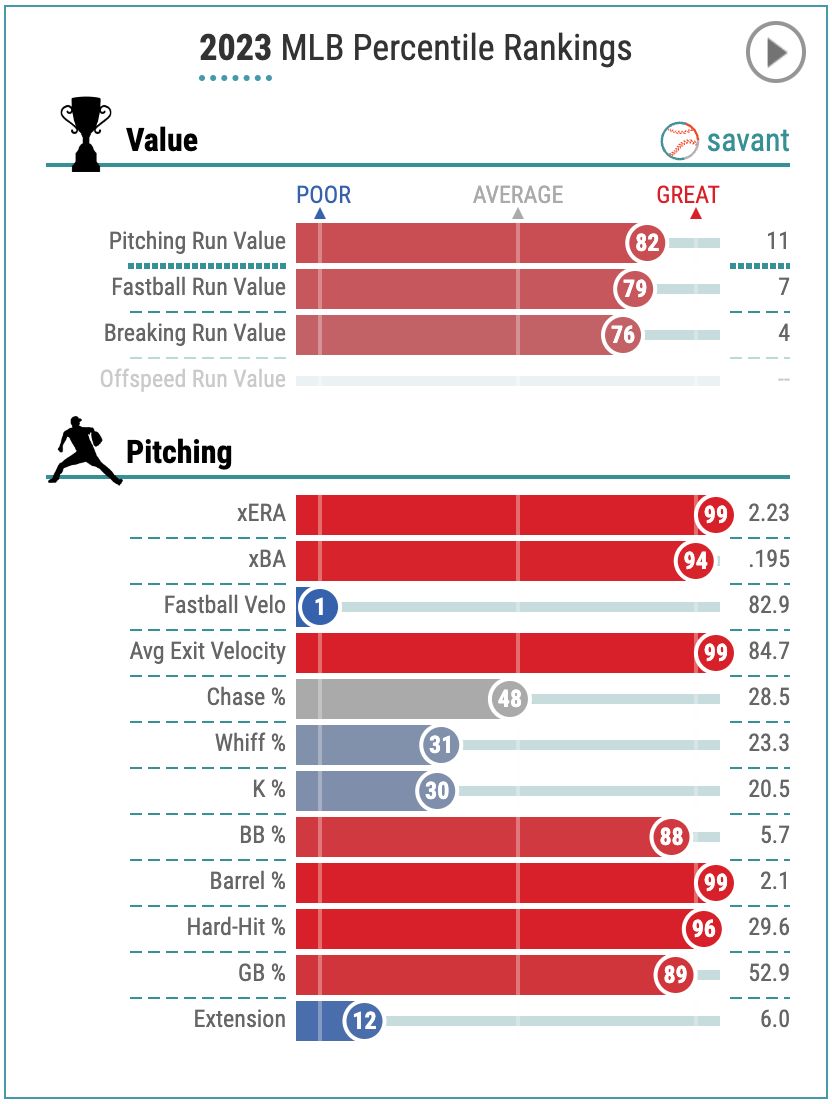
You don't have to have elite velocity or overpower hitters to be a great pitcher. Rogers, one of MLB's most unique pitchers with his submarine delivery, is the proof. The Giants reliever is in the bottom 1% of MLB in fastball velocity but in the top 1% of MLB in expected ERA. His Baseball Savant sliders for swing-and-miss and strikeout rate are well into the blue, but his exit velocity, hard-hit and barrel numbers are even farther into the red. Rogers induces lots of weak contact and ground balls to get the job done.
